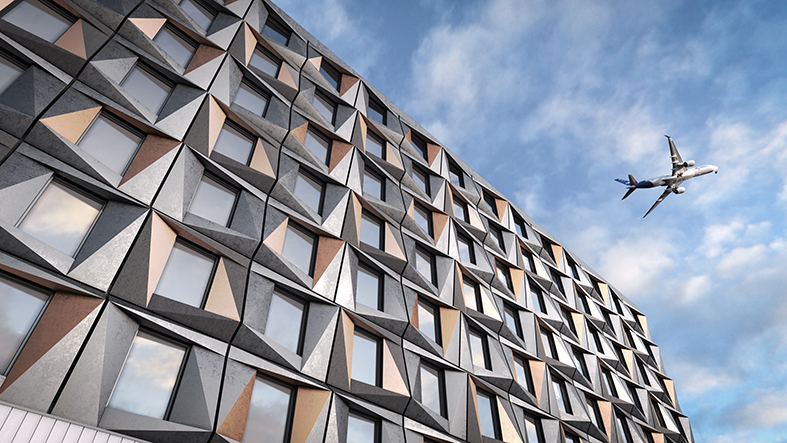
A Brief History of Modern Methods of Construction
Like many industries, there are always changes in the processes and methods that are used in construction.
With new technologies and further understanding into a topic, industries such as construction are always striving to find ways to make their process quicker, more accurate, and simpler.
Modern methods of construction (MMC) is a relatively new process that still only represents around 7% of UK construction. These figures are growing though, and as the methods get ironed out, we’re sure to see more modern methods of construction advisor firms, such as Studio Anyo, jumping to the forefront of UK construction.
But how did MMC start? And what were the key milestones in the birth of this new form of construction?
Let’s take a look.
Six Key Milestones of Modern Methods of Construction
The history of modern methods of construction (MMC) can be traced back to the early 20th century when new technologies were developed to improve the efficiency of construction and reduce costs.
Construction is an industry that has always been around, and always will be, but with new technologies, materials, and research, some processes have been able to be streamlined.
But just what paved the way for MMC to grow to become such an exciting part of UK construction?
Well, here is a brief overview of six key milestones in the development of MMC that still remain as the cornerstone of what this new form of construction represents.
Precast Concrete
While precast concrete can be dated back to the Romans, it wasn’t until the 1920s when the ability to mass produce precast components made them available for construction throughout the UK on structures such as houses, bridges, and factories.
As precast components are manufactured off site in a factory, construction on site can be much more efficient and focused. No longer do loud, disruptive, time-consuming jobs need to be undertaken on site, as the components are ready made, drastically reducing the time it takes to put a structure together.
Precast concrete also helps with quality control, as each component can be checked thoroughly throughout the production process and when finished, rather than doing this on-site.
Steel Frame Construction
As with many new advances in industry, steel frame construction was born from a desire for something different.
As buildings grew in size, the response was to introduce steel frame frame construction.
While this method was used in the 19th century, it wasn’t until the mid-20th century that steel frame constructions became the preferred method for building large scale buildings.
As advances in design, engineering, and construction continue to take place, producing and installing steel frame constructions has become much more efficient, both in time and cost.
Now steel frames are used for everything, from something as small as a garden room, to much larger scale structures such as football stadiums.
Industrialized Building Systems (IBS)
We jump forward to the 1960s now, when the concept of industrialized building systems was introduced.
This is a method of construction that involves the use of pre-engineered building components and systems that are manufactured in a factory and then assembled on site.
The introduction of IBS greatly sped up the efficiency and quality of construction by using standardised, mass-produced components that were quick and easy to assemble.
IBS is a versatile method of construction that can be used across buildings in a wide variety of industries and with many different materials, including wood, concrete, and metal.
This method immediately became popular across Europe and Japan.
Modular Construction
The next decade, in the 1970s, modular construction emerged as a new method of construction.
This is similar to the aforementioned IBS, but involves prefabricated building components (also known as modules) that are manufactured off-site in a factory and then transported to the construction site for assembly.
There are several stages to modular construction:
- Design: Modular buildings are designed using computers aided design software that allows for precise measurements and detailed planning.
- Manufacturing: The building modules are manufactured in a factory, using standardised components and assembly processes.
- Transportation: Once the modules are completed, they are transported to the construction site.
- Assembly: The modules are assembled on sites, often using cranes and other heavy duty equipment.
Modular construction led to a big boom in our next milestone.
Prefabricated Housing
In the 1980s and 1990s, prefabricated housing became popular, particularly in the United States.
This involved the manufacture of entire house components, such as walls and roofs, in a factory, which were then transported to the construction site for assembly.
This stems from the advances in modular construction, and hence these buildings are often called modular homes.
The boom in prefabricated housing meant that housing was much quicker to build and much more affordable.
Digital Construction
In the 21st century, the use of digital technologies, such as Building Information Modeling (BIM), has transformed the construction industry, allowing for greater precision and efficiency in the design and construction process.
The term digital construction refers to the use of digital tools and technologies, such as BIM, 3D printing, drones, virtual reality, and more.
These latest advances in technology have led to a revolution in construction, and as the technology grows, newer, more efficient methods are going to be made.
Digital methods of construction are ideal for many different reasons, including making it much easier to collaborate across projects, making hazards easier and safer to spot due to much more detailed assessment tools, less material waste due to errors, improved accuracy and more.
This final milestone is key to the rise of modern methods of construction in recent times, and the future is certainly exciting.
Modern Methods of Construction with Studio Anyo
Overall, modern methods of construction have evolved significantly over the past century, driven by the need for greater efficiency and cost savings in the construction industry.
These methods have helped to improve the speed and quality of construction, while also reducing the impact on the environment.
At Studio Anyo, we work on a wide range of buildings across many industries, and have an experienced team of designers, architects and more.
If you want to know more, or would like to discuss a specific project, then get in touch with our team today.
In the meantime, why not check out some of our previous work.


